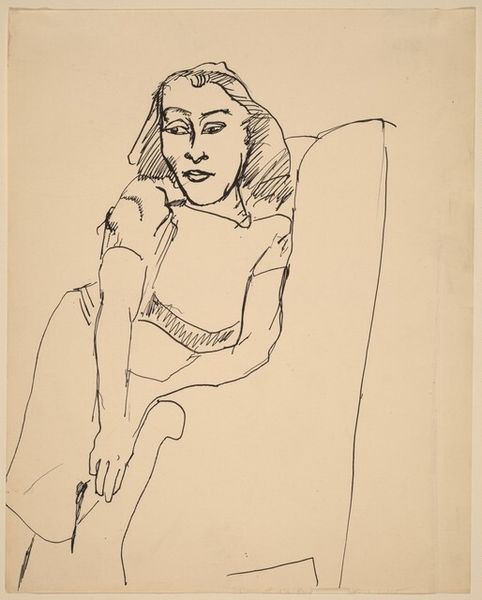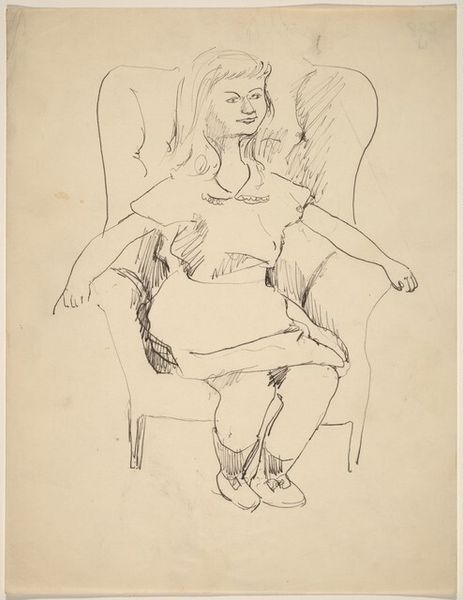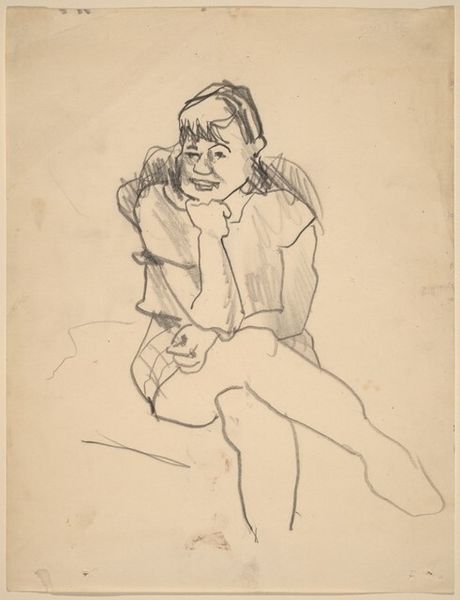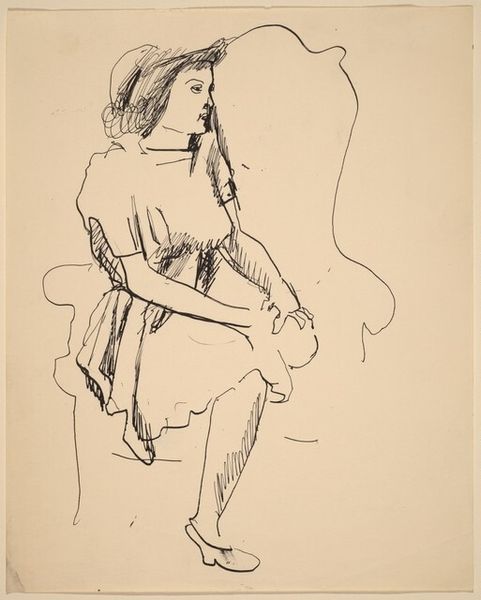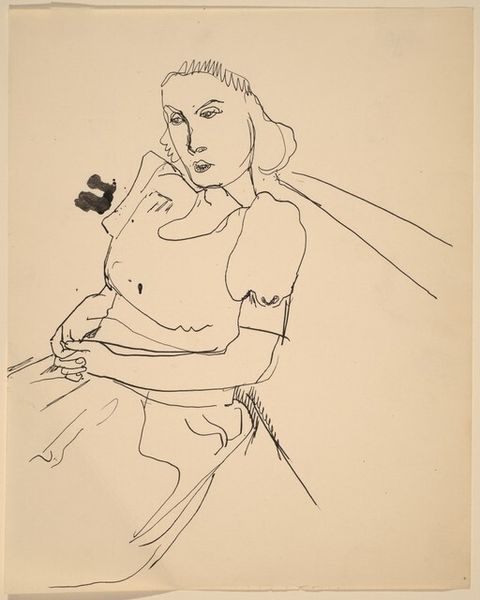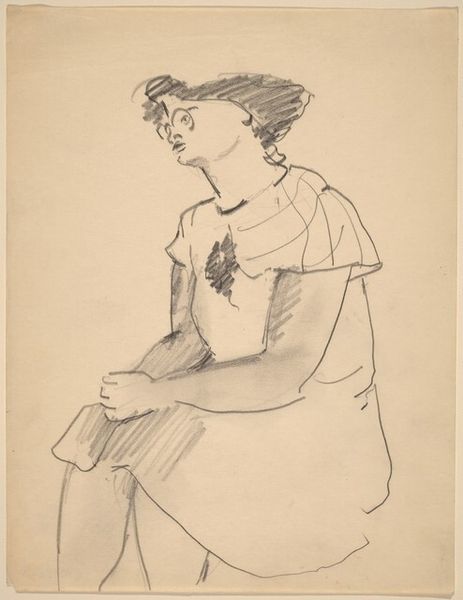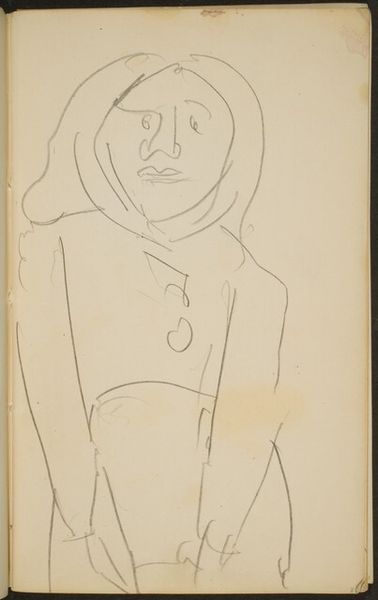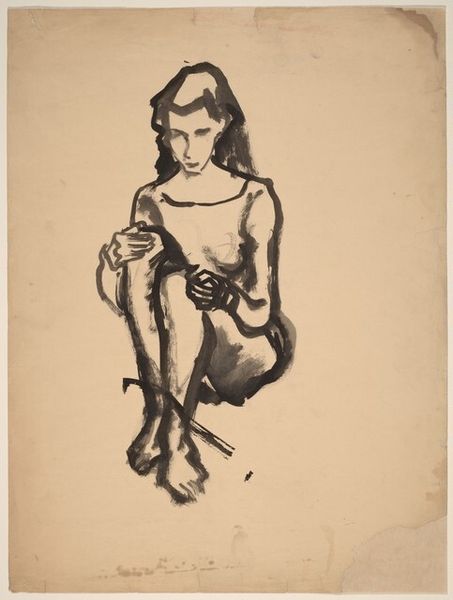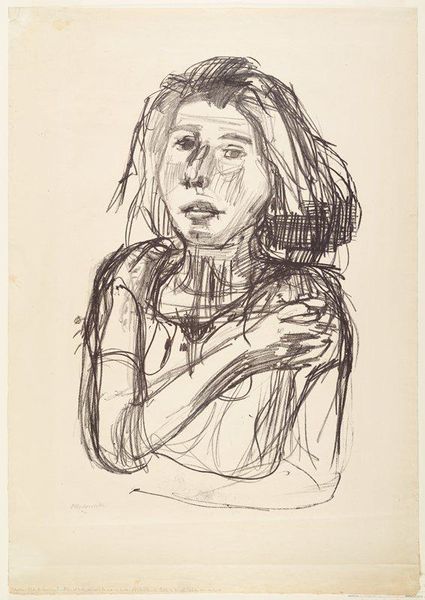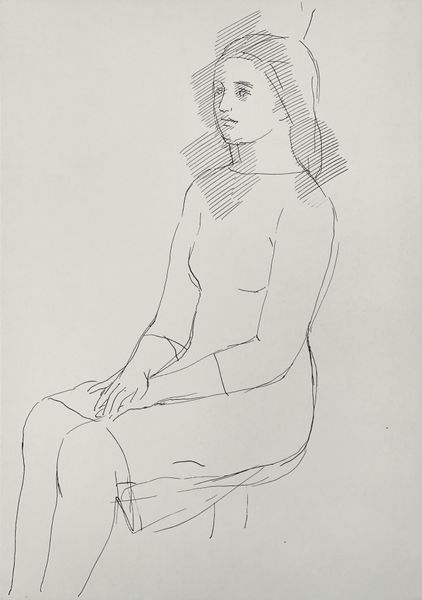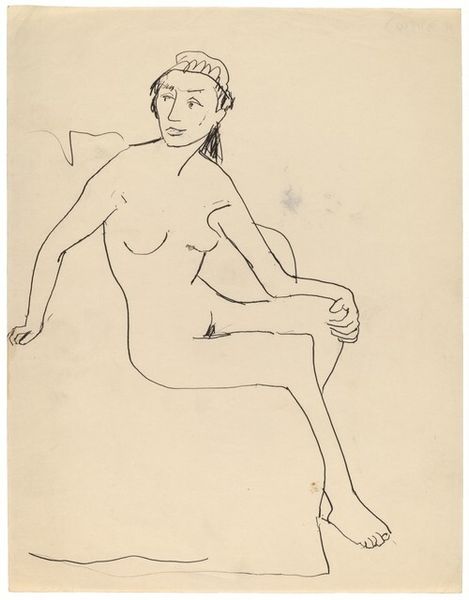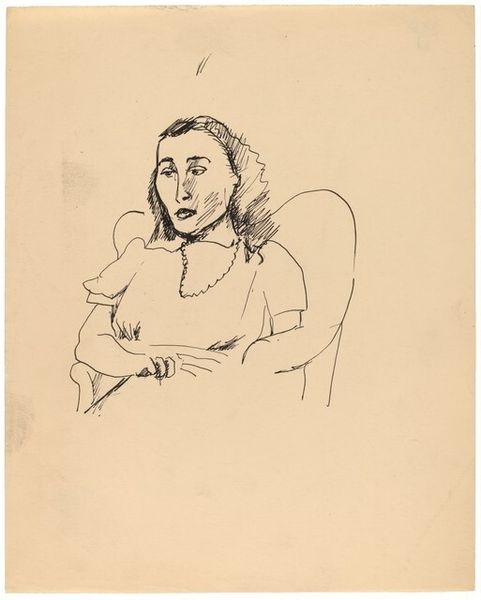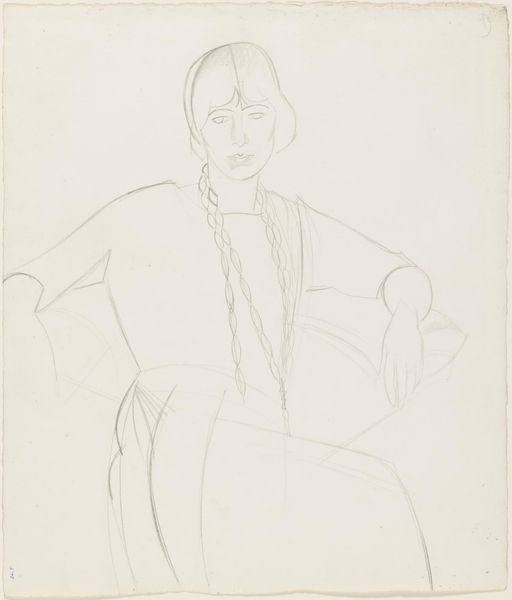
drawing, ink
#
portrait
#
drawing
#
ink drawing
#
pencil sketch
#
figuration
#
ink
#
portrait drawing
Dimensions: overall: 27.9 x 21.6 cm (11 x 8 1/2 in.)
Copyright: National Gallery of Art: CC0 1.0
Editor: Here we have a drawing by Mark Rothko, titled *Young Girl Seated in Wing Chair, Hands Folded*. The medium appears to be ink on paper. There's a delicate simplicity to the line work, yet it conveys a certain pensiveness in the girl's posture. What do you see in this piece? Curator: I'm immediately struck by the emotional weight carried by such spare imagery. Notice the girl's hands, clasped tightly. This recurring motif represents vulnerability. Her posture in the over-sized chair evokes both protection and confinement. The wing chair itself becomes a symbolic space, almost womb-like, representing a stage of childhood. Rothko seems interested in archetypes, using universal symbols to touch upon deeply human themes. What do you make of her gaze? Editor: It seems directed downwards, inward, lost in thought maybe? Does that downward gaze connect with certain psychological understandings of melancholy? Curator: Precisely! In many cultures and across centuries, the averted gaze signifies humility, introspection, or even sorrow. Think of the *Mater Dolorosa*, the sorrowful mother, a classic image in religious iconography. Rothko strips away religious context, presenting us with a secular icon of youthful melancholy. It taps into the psychological weight associated with those symbols, drawing power from cultural memory. The blank space around the figure, almost aggressive in its emptiness, emphasizes her isolation. It seems almost anticipatory, foretelling the vast, undefined spaces he would later explore in his abstract paintings. Editor: I never thought of the composition itself holding so much meaning! It's amazing how a few lines can speak volumes about universal feelings. Curator: Indeed. Rothko recognized the profound power of simple forms and poses to communicate complex emotional truths. Visual elements such as posture, composition, and empty space converge and act as metaphors, triggering potent and far-reaching psychological responses. Editor: I am grateful to now recognize symbolic space with posture; it opens my interpretation to understanding how powerful minimal form is when exploring subject’s emotional burden.
Comments
No comments
Be the first to comment and join the conversation on the ultimate creative platform.
